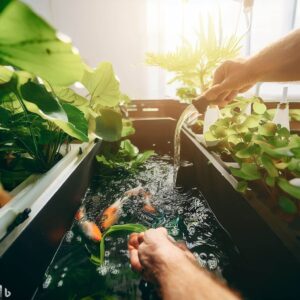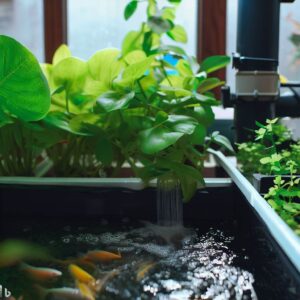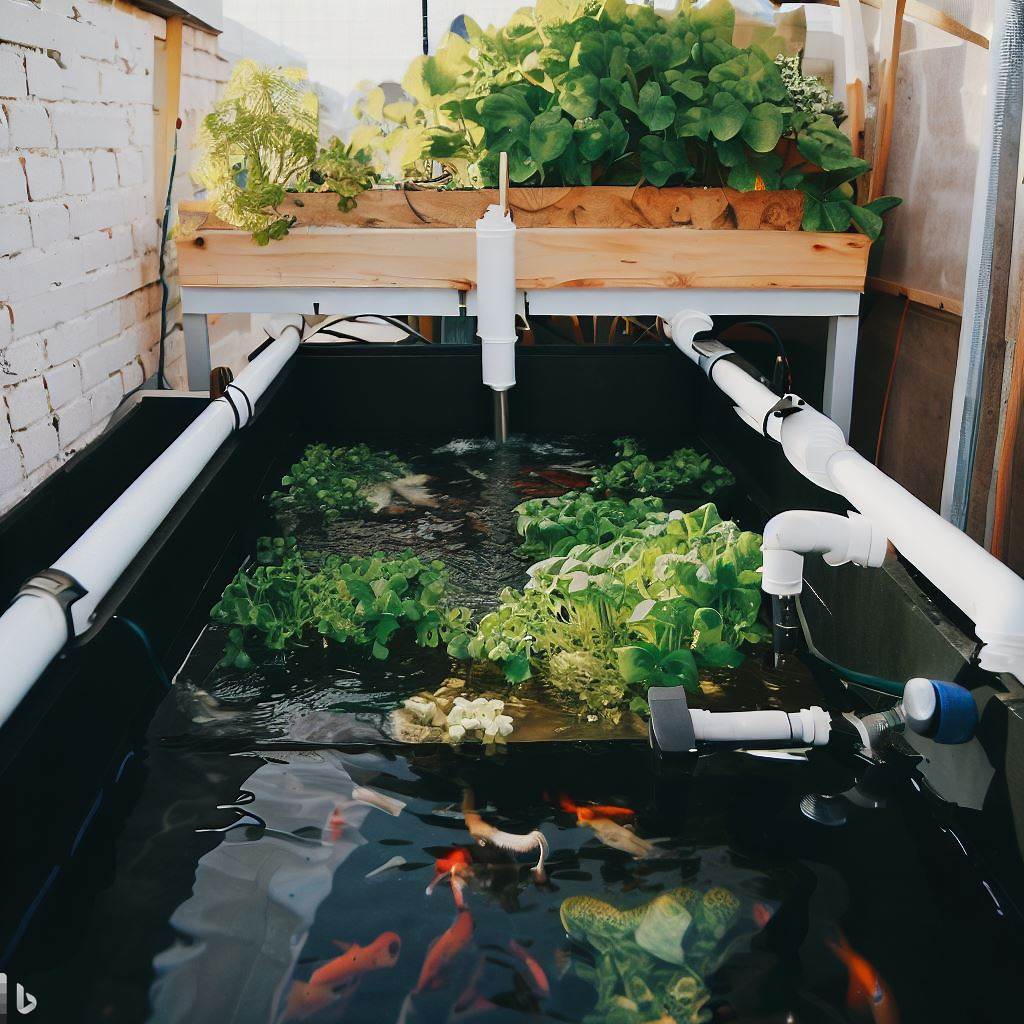In this article, we will explore the fascinating world of (may be your first) DIY home aquaponics system and have this quick guide to help get your started & walk you through the process of creating your own. Aquaponics is an innovative and sustainable method of cultivating plants and fish in a closed-loop ecosystem. With a bit of dedication and the right resources, you can build a thriving aquaponics system right in your own home.
Table of Contents
- Introduction to DIY Home Aquaponics Systems
- Materials You Will Need
- Designing Your DIY Home Aquaponics System
- Setting Up Your DIY Home Aquaponics System
- Maintaining Your DIY Home Aquaponics System
- Conclusion
 Introduction to DIY Home Aquaponics Systems
Introduction to DIY Home Aquaponics Systems
A DIY home aquaponics system combines the cultivation of plants and fish in a mutually beneficial ecosystem. Fish waste provides nutrients for the plants, while the plants clean the water for the fish. This closed-loop system conserves water and requires minimal external inputs, making it a sustainable and cost-effective solution for growing fresh produce at home.
Materials You Will Need
To build your DIY home aquaponics system, you will need some essential materials:
- Tank for fish
- Grow bed for plants
- Water pump and tubing
- Aeration system
- Grow media
- Lighting system (for indoor setups)
- Heater (for maintaining optimal water temperature)
- Testing kits (for water pH, ammonia, nitrite, and nitrate levels)
Designing Your DIY Home Aquaponics System
 When designing your DIY home aquaponics system, consider the following factors:
When designing your DIY home aquaponics system, consider the following factors:
- System size: Determine the appropriate size based on available space, desired plant yield, and the number of fish you plan to keep.
- System type: Choose between media-filled beds, nutrient film technique (NFT), or deep water culture (DWC) systems, each with its own advantages and disadvantages.
- Grow bed to tank ratio: A general rule is to have a 1:1 ratio between the grow bed and the fish tank volume.
Remember to research local regulations regarding aquaponics and acquire necessary permits, if applicable.
Setting Up Your DIY Home Aquaponics System
Follow these steps to set up your DIY home aquaponics system:
- Assemble the fish tank and grow bed in your chosen location.
- Install the water pump and connect it to the grow bed using tubing.
- Fill the grow bed with a suitable grow media, such as expanded clay pellets or lava rock.
- Set up the aeration system to provide oxygen for the fish.
- Fill the tank with water and allow it to circulate for a few days to stabilize the pH and temperature.
- Add fish to the tank and allow them to acclimate.
- Introduce plants into the grow bed and begin monitoring water parameters regularly.
Maintaining Your DIY Home Aquaponics System
Proper maintenance is crucial for the success of your DIY home aquaponics system. Follow these tips for a healthy and productive system:
- Regularly test and adjust water pH, ammonia, nitrite, and nitrate levels.
- Monitor and maintain optimal water temperature for your fish species.
- Feed fish a balanced diet and avoid overfeeding.
- Prune plants as necessary to prevent overcrowding.
- Clean and inspect the system regularly for any signs of leaks, clogs, or pests.
Conclusion
 Building your own DIY home aquaponics system is a rewarding and sustainable way to grow fresh produce and raise fish in a closed-loop ecosystem. With proper planning, materials, and maintenance, you can enjoy the benefits of aquaponics right in the comfort of your own home. Remember, patience and dedication are key to achieving a thriving system, and the rewards are well worth the effort.
Building your own DIY home aquaponics system is a rewarding and sustainable way to grow fresh produce and raise fish in a closed-loop ecosystem. With proper planning, materials, and maintenance, you can enjoy the benefits of aquaponics right in the comfort of your own home. Remember, patience and dedication are key to achieving a thriving system, and the rewards are well worth the effort.
